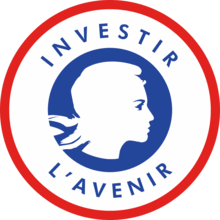3D virtual fruit: application to fruit growth and quality control
Goals
• Provide methods for generating fruit architecture that can be integrated with models of the physiological processes driving fruit growth. . Create a volumetric representation of various fruit tissues, such as pericarp, columella, placenta, locular cavities (jelly + seeds), and vascular bundles.
• Fig 1: Images of four tomato varieties showing the shape and internal structure of the fruit: (A) round, (B) elongated, (C) obovoid, and (D) ellipsoid. These different architectures play a role in the development of fruit quality, e.g., in causing blossom-end-rot (BER) in tomato.
Actions
We developed a modelling pipeline in OpenAlea [3] that includes two steps:
1. Generating a 3D volumetric mesh of fruit structure .
• The 3D mesh is constructed using the Delaunay refinement algorithm (with optimisation) from the Computational Geometry Algorithms Library (CGAL) [4], which accepts two types of input:
• a polyhedral surface, which can be generated from 2D curves, or
• 3D image slices from segmented MRI data.
2. Generating a network of vasculature embedded within a 3D mesh .
• Because the small vascular bundles are difficult to retrieve using images, we generate vascular geometry based on the following hypotheses:
• Some tissues are supplied by separate vasculature (pericarp and placenta).
• Vascular bundles compete for space inside the fruit (Fig. 2).
Fig. 2: Generating vascular geometry based on competition for space [5] using the L-system framework L-py [6]. Initial step (A): Attractor points (red squares) are placed randomly within the volumetric mesh to signify the availability of space for new vascular bundles. Subsequent steps (B-E): New bundles are added into the vascular network based on the neighbourhood of attractor points (highlighted by coloured spheres) sensed by the tips of existing bundles (black spheres). A different colour is assigned to the neighbourhood of points that is sensed by each developing bundle. In (B), for example, brown spheres are the points that are sensed by the tip of the main bundle, whereas yellow and green spheres are sensed by two laterals. At every step the highlighted attractor points are removed after the creation of a new bundle. Final step (F): The radii of vessels are set according to Murray’s law [5], which relates the radii of daughter branches to the radii of the parent branch.
Results
We created 3D volumetric representations of peach fruit from photographs and of cherry tomato from MRI data, with algorithmic generation of vasculature:
• Prunus persica : Fig 3: The images on the left show a photograph of a transversal slice of a nectarine fruit (A) and a peach fruit (C) that were used to generate the 3D volumetric meshes shown in the right images (B and D, respectively). The blue and green lines highlight the exocarp and endocarp, respectively, which are used to define two polyhedral surfaces (one for the stone and another for the fruit’s surface) that serve as input into CGAL. The main ventral and dorsal vascular bundles on the endocarp are defined by the user (the green line gives their shape), whereas the branching secondary bundles are generated algorithmically according to the competition for space (Fig. 2).
• Solanum lycopersicum : Fig. 4: Generation of tomato fruit structure from MRI data. (A) The input images: 12 MRI data slices of a cherry tomato. (B) The resulting 3D tetrahedral mesh obtained from the CGAL mesh generation procedure after segmentation of the MRI data into tissues, which was done by using slice-by-slice manual tracing. (C) The attractor points used as input into the algorithm that generates vascular bundles inside the fruit. The density of points was dependent on tissue type, so the density of vascular bundles was different in pericarp and columella tissues. (D) The final result showing the 3D volumetric mesh with vascular tissue, which was generated using the algorithm that simulates competition for space (Fig. 2).
Prospects
• Our results showed that the density of vascular bundles decreased from pedicel to apical ends, which is in agreement with observations of real fruit and the hypothesised cause of BER [1]. Also, we obtained a decreasing average radius of bundles from the pedicel to apical ends (due to application of Murray’s law).
• Our approach to generating fruit geometry from images or MRI data, coupled with the algorithmic generation of vasculature, enables creation of species-specific based models of fruit architecture with relatively low effort.
• The volumetric meshes can be combined with models of function to form integrative computational models of fruit (functional-structural models), which can be used to study the effects of fruit architecture on growth and quality.
• We are currently investigating the effects of asymmetric vascular structure on the distribution of water and carbon in the fruit to show the dependence of this distribution on vascular geometry.
- Project Number0803-027
- Call for project
- Start date :1 January 2009
- Closing date :31 December 2012
-
Research units in the network


